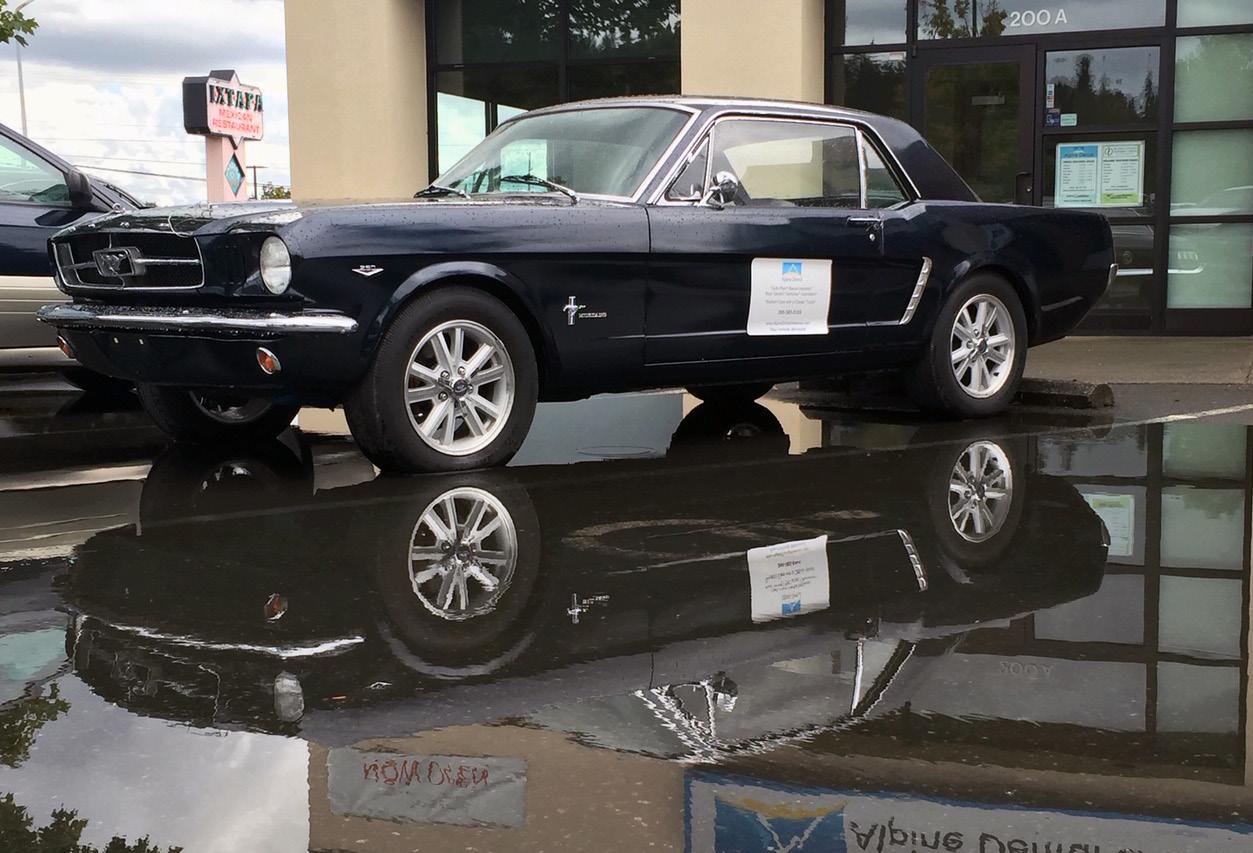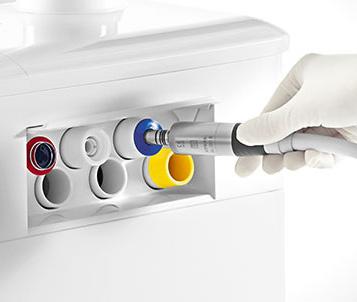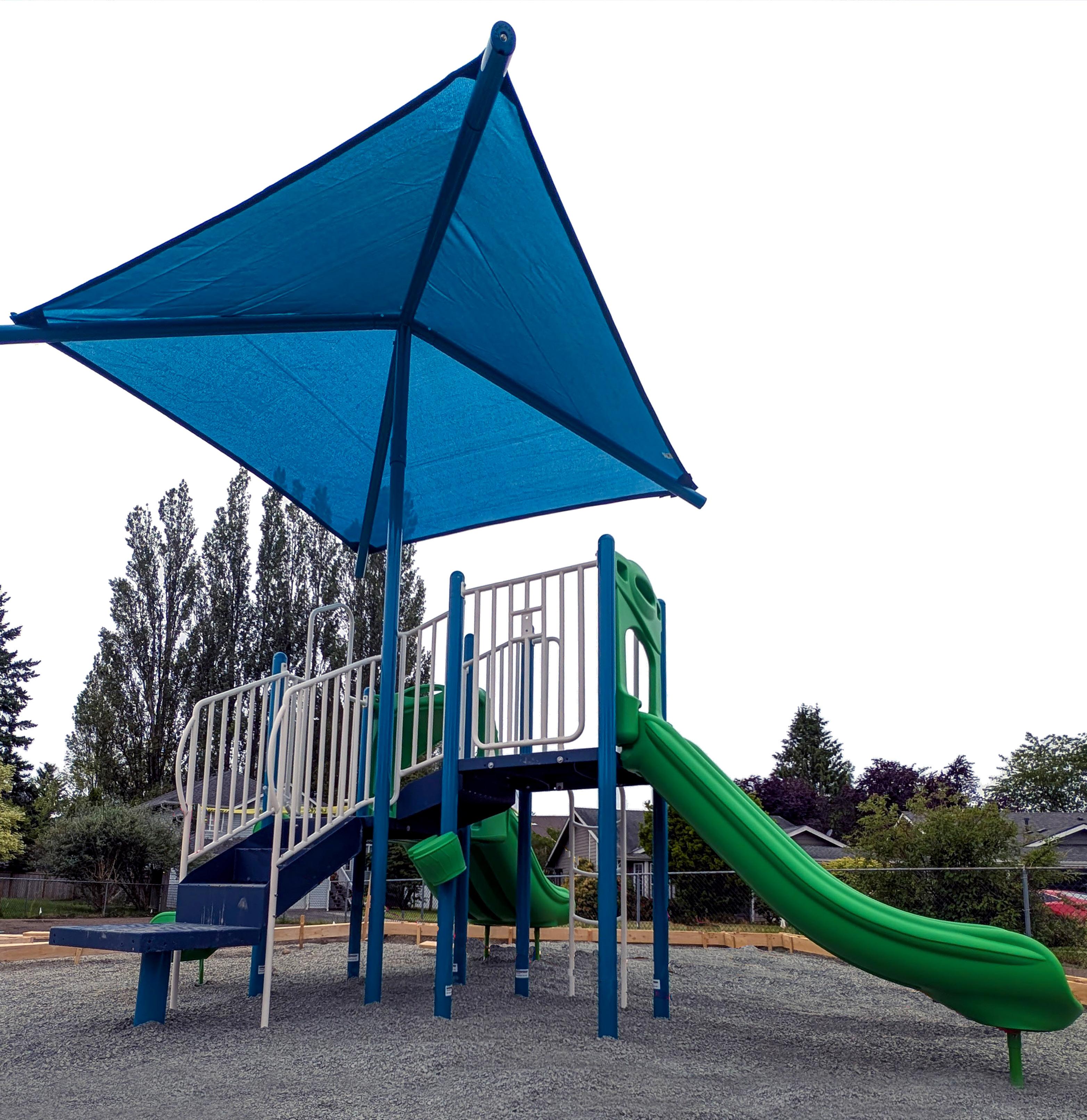
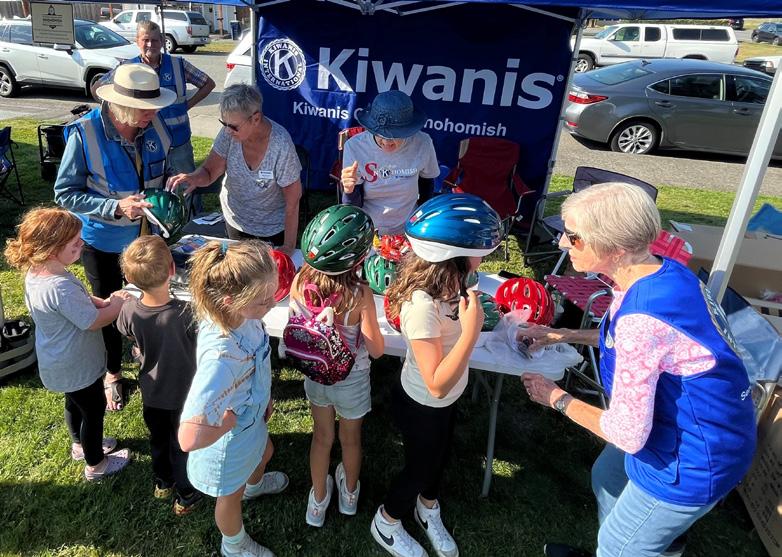
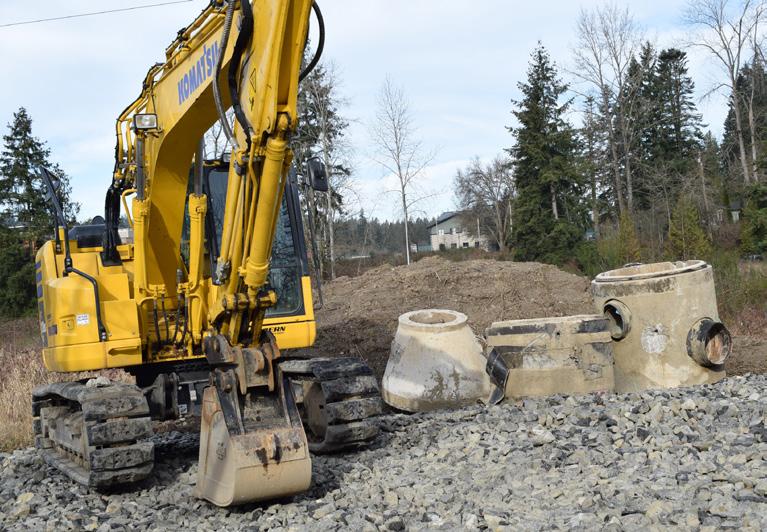
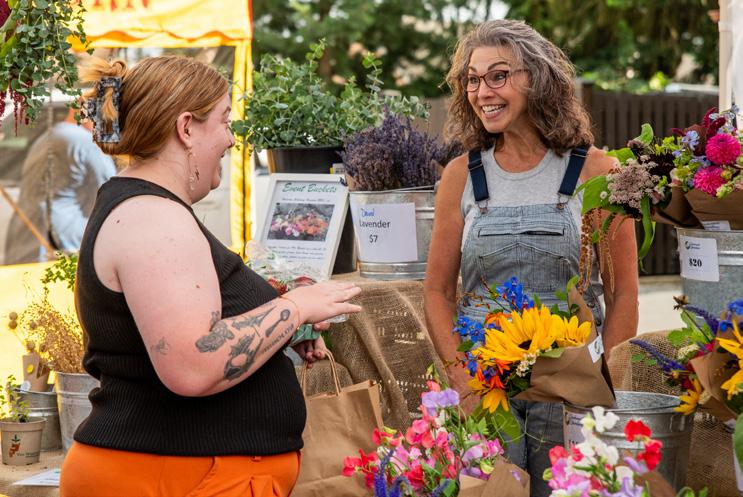
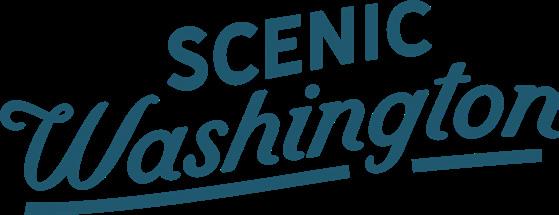







Welcome to our new City Clerk, Melissa Collins. She has extensive experience in administrative support, records management, and municipal operations. Melissa has previous experience at the City of Stanwood and most recently as the Director of Commission and Executive Services at Snohomish PUD. She holds a Master Municipal Clerk certification and has worked alongside elected officials and staff alike, providing expertise in records management and compliance with legal and regulatory requirements.
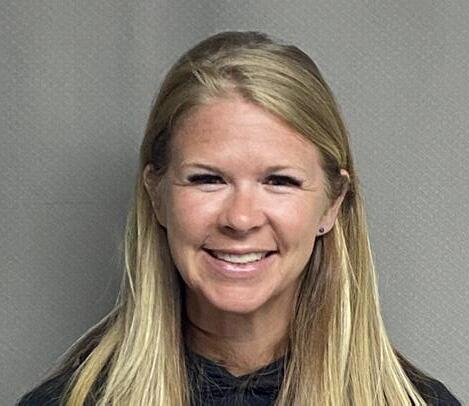
We’re also excited to welcome Brandi Pickens, who joined us as a Maintenance Worker with the Stormwater/ Collections Team. She comes to us from Cadman Construction and brings with her 21 years of experience as a heavy equipment operator with Local Union 302, including experience working with stormwater and sewer systems.

Our new Accountant, Linda Cheng, has also joined the City team. She supports the Finance Department by coordinating payroll and other general ledger activities. Linda has experience in accounting and finance from both the private and public sectors, including HSBC Bank, Amazon, and Bellevue.
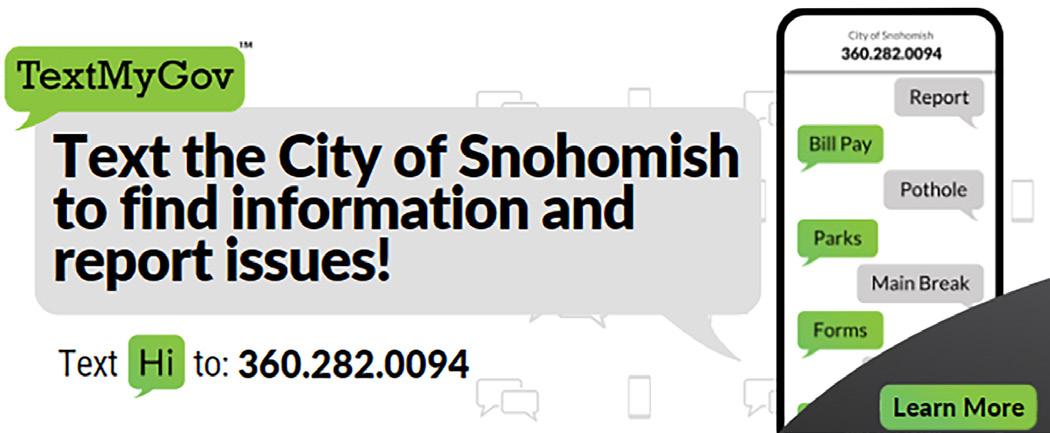
There are many ways to connect with the City of Snohomish!
For general inquiries, call 360-568-3115, stop by City Hall (116 Union) or visit our website: www.snohomishwa.gov
To report a concern, text “Hi” to 360-282-0094. Follow the prompts to access information or report concerns like potholes or missing street signs. You can also report pedestrian and/or crosswalk safety concerns via text. Be sure to include the words "pedestrian" or "crosswalk" in your report and the specific location of the concern.
In May, Mayor Linda Redmon delivered her annual State of the City address at the historic Snohomish Carnegie Building. This year’s theme, The Power of Partnerships, celebrated the city’s enduring spirit of collaboration—honoring its rich legacy, spotlighting current initiatives, and envisioning a vibrant future for Snohomish. Scan the QR code to see how partnerships are shaping our city’s path forward.

City Hall
PO Box 1589
116 Union Avenue
Snohomish, WA 98291-1589
Phone: 360-568-3115
Hours:
Tuesday, Wednesday, Thursday, 8 AM – 4 PM
Monday, Friday by appointment
Text “Hi” to 360-282-0094 to report a concern.
Please see the City’s website for additional Information: www.SnohomishWA.gov
Police
230 Maple Avenue
Snohomish, WA 98290
Phone: 360-568-0888
Emergency: 911
Non-Emergencies: 425-407-3999
Office Hours:
Monday–Friday, 8 AM – 4 PM
Patrol deputies are on duty 24 hours a day and can be reached by calling 911.
Department Contacts
Linda Redmon, Mayor
360-282-3154
redmon@SnohomishWA.gov
Heather Thomas-Murphy City Administrator
360-282-3194
thomas@SnohomishWA.gov
Brooke Eidem, Planning Director 360-282-3167
eidem@SnohomishWA.gov
Nova Heaton, Public Works Director 360-282-3187
heaton@SnohomishWA.gov
Alisha Hendron, Finance Director 360-282-3197
hendren@snohomishwa.gov
Shari Ireton, Director of Community Engagement & Strategic Initiatives
360-282-3176
ireton@SnohomishWA.gov
Rebekah Park, Human Resources Manager 360-282-3155
park@SnohomishWA.gov
Melissa Collins, City Clerk
360-282-3181
m.collins@SnohomishWA.gov
Nathan Alanis, Police Chief
360-568-0888
snohomishpd@SnohomishWA.gov
BY LINDA REDMON, MAYOR
Summer in Snohomish is always spectacular! For many, these are the “lazy days” of summer. For City staff, these are some of the busiest times of the year. City Hall and Public Works staff devote a lot of time to supporting events that our community partners organize. Public Works is also busy working on many capital projects as well as street and park maintenance projects that require good weather to complete. See p. 8–11 for a round-up of many of the capital projects the City has been working on, investing your dollars back into the community to improve services and facilities now and for the future.
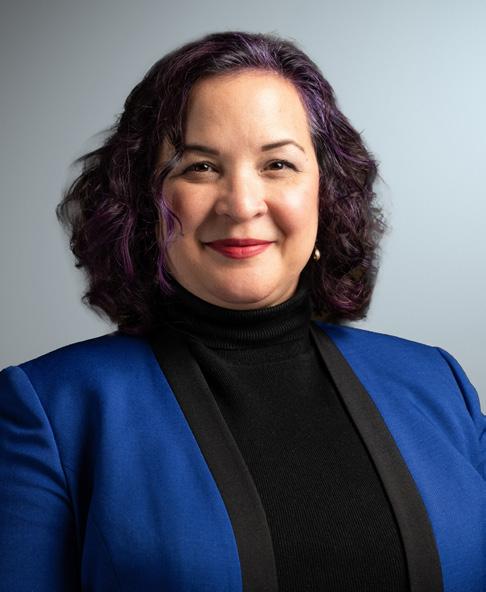
Looking ahead to the remainder of the year, we are planning activities that happen with the change in the weather. This year, on September 27, we will hold our first Arbor Day celebration! Although Arbor Day events typically take place earlier in the year, in our area there is a better chance that the trees will take root and thrive if we plant later in the year. There is less watering and maintenance required as well, saving time and money. Watch for more information on our website or our social media channels!
We will also hold another City Projects Open House in conjunction with the Arbor Day event on September 27 at the Snohomish Carnegie Building. We hope you can join us and learn more about the great work City staff are planning and implementing to improve our community’s infrastructure.
Enjoy the rest of the summer!
Mayor Linda Redmon redmon@snohomishwa.gov
Arbor Day/City Projects Fall Open House
9:30-11:30 a.m.
Saturday, September 27
Snohomish Carnegie Building
BY COUNCILMEMBER FELIX NEALS
Let me start by thanking you, the citizens of Snohomish, for your continued partnership in making the city of Snohomish a jewel, in the county, state and beyond. It is with great pride that I continue to serve as one of your elected officials.
Because I regularly engage citizens to stay attuned to what is important to you, I have come to appreciate the power of cooperation and collaboration. As we face some headwinds and uncertainty in the years ahead, I remain committed to being a responsible steward for all of you. We, as elected officials, have the responsibility to address our most persistent challenges to create a community where people are safe, stable and thriving, while making sure we remain focused on the five essential services: Utilities, Law Enforcement, Transportation, Parks and Planning/Permitting.
To that end, it is vitally important to me to continue to work in partnership to take on the pressing issues ahead of us. In the near term, some of what we are focused on includes:
Preserving the rich character of the town on First Street will need to be balanced with an eye towards forward-thinking parking arrangements and alternatives, as well as attending to much
needed repairs to the infrastructure.
The City has utilities under First Street that are nearly 100 years old and must be replaced in the next few years. While our plan is to redo sidewalks, replace the road, and make other necessary infrastructure upgrades while that utility project is underway, we still want to hear from you. This master planning process is only the first phase of this long-term project. While we look at all options to see what can be done to improve, we want to continue to hear from businesses, customers, and community members.

as expanded public/private partnerships.
We have heard from many of you that there are a myriad of issues here; related to speeding (and speed limits), pedestrian and bicycle safety, and more. The “Complete Streets” ordinance, dedication to an increased budget for sidewalks, and projects identified in the Transportation Improvement program are some examples of what is being done to develop comprehensive and integrated answers to these complex issues.
Median household income has not kept pace with increasing housing costs, and, as a result, nearly 30 percent of homeowners in Snohomish and 40 percent of renters are either cost-burdened or severely cost burdened, (meaning they spend 30 percent or more than 50 percent of their income on housing costs). Policies which increase the housing supply (e.g., ADU’s and minimum residential density rules enacted in RCW 36.70A.635) will be important tools, as well
What I will continue to value highly is listening to your feedback on these, and other, initiatives that we are undertaking. I’ve learned to appreciate all voices, and believe that the collective wisdom gained from citizen input will continue to lead to meaningful action.
As local elected officials, we are chosen to lead our communities and to do the work to make them better places to live. I’m here to do just that.
Councilmember Felix Neals neals@snohomishwa.gov
BY KEN HAMMOND, BOARD MEMBER, KIWANIS CLUB OF SNOHOMISH
Who is the Kiwanis Club of Snohomish?
Since 1954, the Kiwanis Club of Snohomish has helped serve the needs of the greater Snohomish area and supporting many important children-related causes locally, throughout the Pacific Northwest and internationally. The club’s mission as a local service organization is to serve the children of their community as well as children around the world.
The Snohomish Kiwanis Club is growing, meeting Thursdays at noon (with one monthly evening meeting the first Thursday of each month) at Collectors Choice Restaurant in Snohomish.
Most of the club’s funding is raised at the Snohomish Kiwanis Annual Spring Charity Auction fundraising event at Thomas Family Farm, raising over $100,000 in 2025, as well as through generous donations from local individuals, businesses, and organizations. The Kiwanis Club of Snohomish has financially supported and has donated many hours by its members to lend
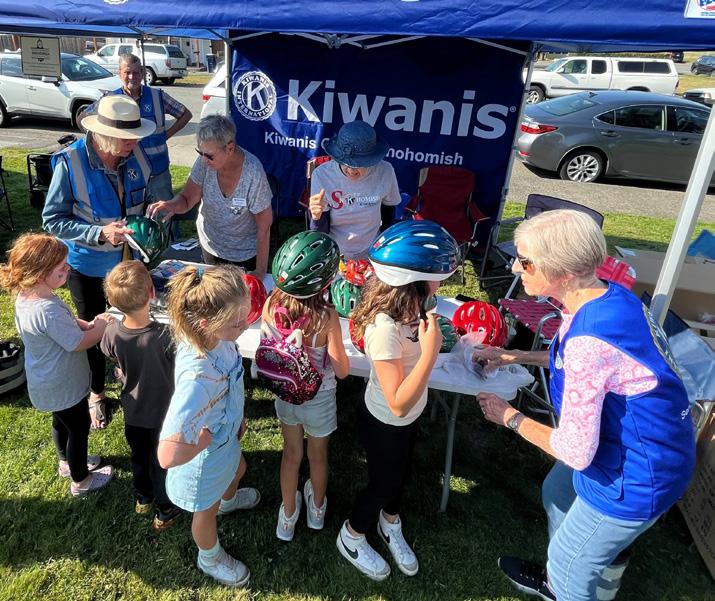
a helping hand to numerous local community service projects for the greater good of everyone.
The Kiwanis Club of Snohomish has designated the Boys & Girls Club of Snohomish as their

Connect with the Kiwanis Club of Snohomish:
» Facebook: Kiwanis Club of Snohomish
» Web: www.snohokiwanis.org
» Email: snohokiwanis@gmail.com


primary beneficiary for many years. The Snohomish Boys & Girls Club provides kids a safe place to learn, make lasting friendships, gingerbread houses, or just to have fun! In 2024, Snohomish Kiwanis made a $60,000 donation to the construction and development
of a brand-new Boys and Girls Club Teen Center. Snohomish Kiwanis was also instrumental in designating a “Legacy Project,” raising over $129,000 towards a beautiful new inclusive and accessible playground next to the Boys and Girls Club at Averill Field
in Snohomish, designed for kids of all abilities and ages.
You can get involved too. The goal of the Kiwanis Club of Snohomish is to improve the lives of children in our community. Kids Need Kiwanis and Kiwanis Needs You!

at evergreenhealth.com/monroe.













• Cost: $4.1M (including $3M in grant funding)

• Impact: Completed Summer 2025





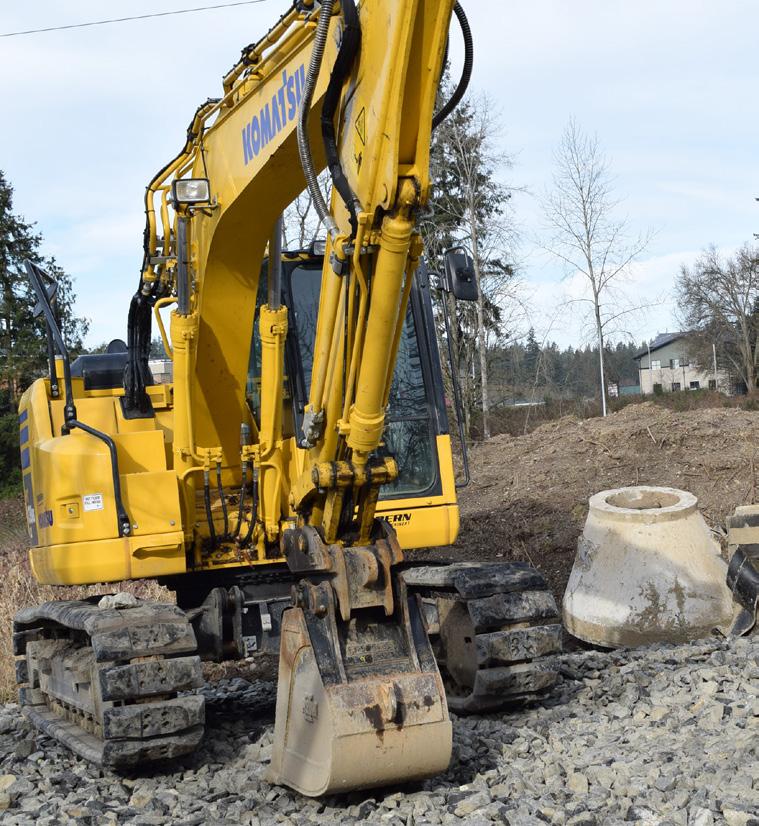





• Benefits: This project will open up the north area of Snohomish for development by increasing the capacity of the sewer system. With this project we are able to reroute approximately 300K gallons per month of sewer flow from the existing system and take two sewer pump-stations offline. This will save the City and residents in costs for electricity and reducing the potential for environmental impacts caused by pump failures that could lead to sewer back-ups or overflows.





• Cost: $1.3M (including $394K in grant funding)
• Impact: There will be traffic lane revisions and delays, but no full road closures. Expect increased congestion and, when possible, use an alternate route. Access to all residences and businesses will be maintained.
• Benefits: There will be a new traffic signal for improved traffic flow along with new sidewalks and curb ramps for accessibility from Weaver Road and Weaver Way (also known as the “Bicycle Tree Neighborhood”) and Bickford Ave. In addition, there will be improvements to the storm system and pavement markings.
• Cost: $266K (including $51K in Transportation Benefit District Funding)
• Impact: Completed summer 2025
• Benefits: Ford Avenue, portions of Ninth Street, and VanJan Street, have a new water main to improve volume, pressure and hydrant flow, a new sewer main, storm drainage improvement (to reduce runoff onto private property), and new road base and pavement.








• Cost: $285,000 (including $90K in grant funding)
• Impact: The planning portion of this project will not impact the community in a physical way. Once construction is under way you may experience minor traffic revisions, however much of the project will take place on the park site.
• Benefits: This will be the first City park west of Highway 9 to support our residents and neighborhoods on the westside of Snohomish.
• Cost: $4.6M (including $455K in grant funding)
• Impact: There will be traffic lane revisions on Avenue D from Second Street to Tenth Street as the water, sewer, and storm pipes are replaced. There may be temporary pedestrian/bicycle access. Businesses will be accessible during the project.
• Benefits: Water, sewer, and storm pipes will be replaced, new curb ramps installed, and the road base rebuilt with new asphalt. This will improve accessibility and services, including hydrant flow to residents and businesses on Avenue D from Second Street to Tenth Street and reduce the chance of water main breaks and service line leaks.





















Sidewalks are essential public infrastructure that enhance safety, accessibility, and quality of life for all. While property owners are currently responsible for sidewalk and street tree maintenance, many are unaware of this obligation and face unexpected costs. If an accident occurs on a damaged sidewalk, the adjacent property owner may be held liable. The City has identified nearly $40 million in sidewalk deficiencies that must be addressed to meet ADA standards. To improve equity and efficiency, the City is exploring a new approach: shifting maintenance responsibilities from property owners to the City. A consultant will help develop a rate methodology and fee structure for a proposed enterprise fund. This program would cover sidewalk repairs, ADA compliance, curb ramps, driveways, and street tree services such as removal, replacement, and maintenance. Similar programs in Denver and Syracuse are funded by property-based fees. Recommendations are expected in late 2025, with implementation planned for 2026.



















• Cost: $6.4M (including $345K in grant funding)
• Impact: There will be traffic lane revisions on Tenth Street from Avenue D to Maple Ave and Avenue A from Tenth Street to 11th Street. There will also be temporary pedestrian/ bicycle access through most of the summer. Businesses on Tenth Steet will be accessible during construction.
• Benefits: Water, sewer, and storm pipes will be replaced, new curb ramps installed, and the road base rebuilt with new asphalt. This will improve accessibility and services, including hydrant flow to residents and businesses on Tenth Street from Avenue D to Maple Ave and Avenue A from Tenth to 11th Street and reduce the chance of water main breaks and service line leaks.



• Cost: Rectangular Repeating Flashing Beacons (RRFB) $100.4K (including $85K grant funding) and Pedestrian Flags $4,267 from American Recovery Program Act (ARPA) funds.

• Impact: Minimal traffic interruptions and temporary lane revisions during preparation and installation.
• Benefits: These flashing lights at crosswalks will help alert drivers to people crossing, reducing the risk of accidents. The project also includes building curb bulb-outs, which extend the sidewalk to make it easier for pedestrians to be seen and improve overall accessibility. With these upgrades walking and biking will become a safer and more attractive option. Pedestrian crossing flags enhance safety by increasing visibility and alerting drivers to pedestrians in crosswalks. They are a cost-effective way to improve pedestrian safety, particularly in areas where visibility may be limited.
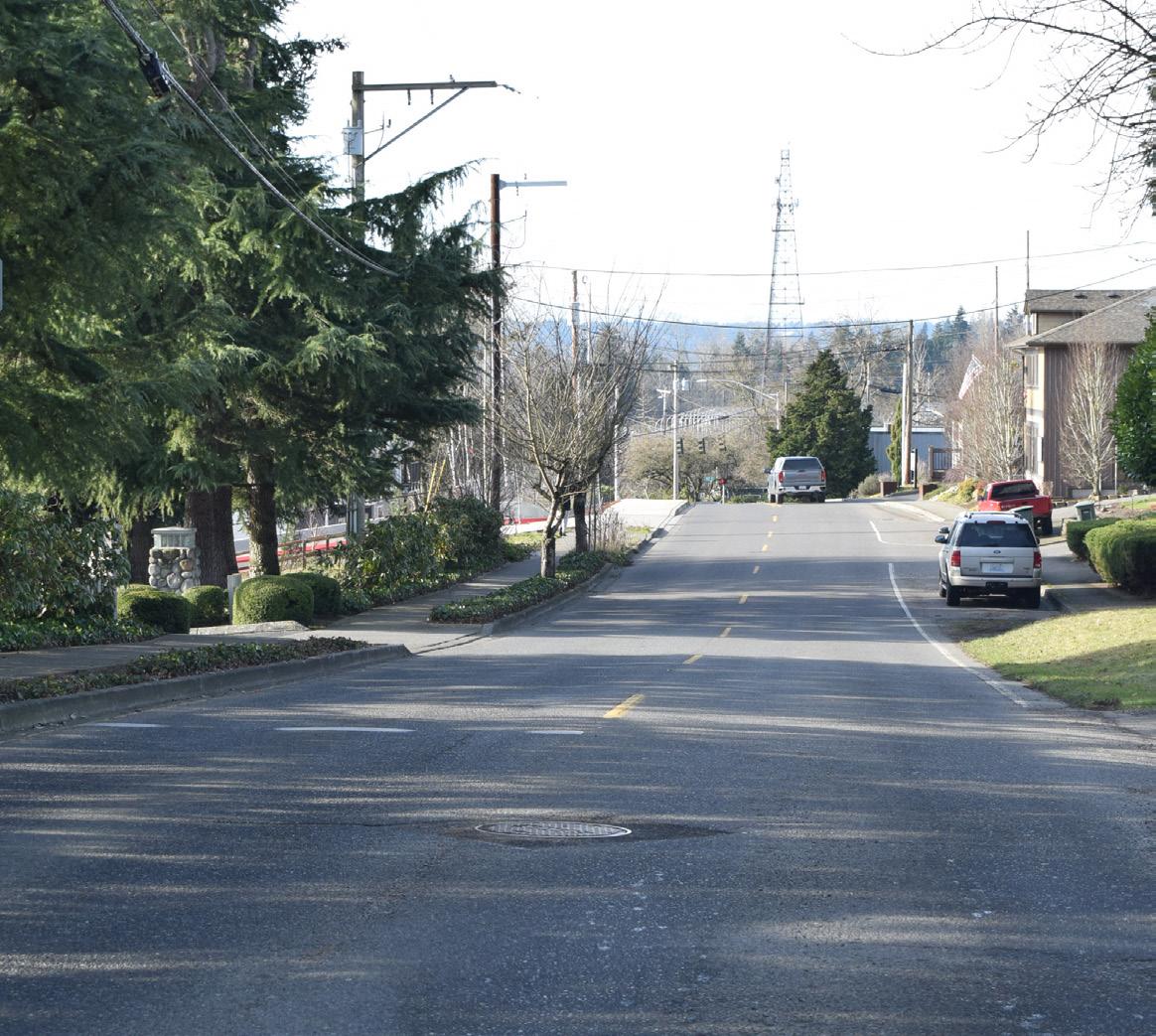






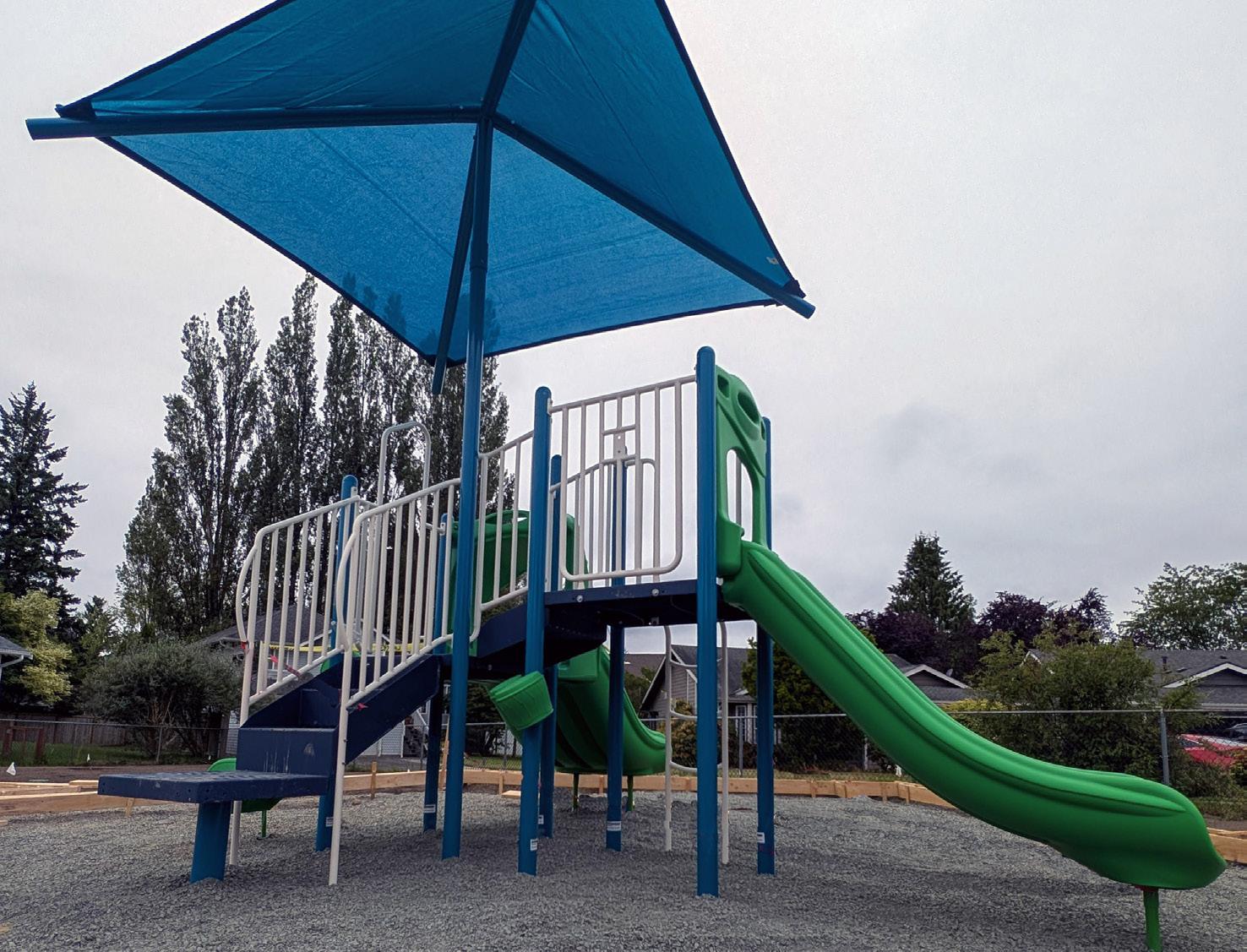

• Cost: $65,000
• Impact: Fischer Park (1214 Madrona Drive) will be closed for several months over the summer of 2025.
• Benefits: The park will be redesigned to better support households with young children, and a new, safer playground is installed. In addition to these benefits, this served as a training project for City staff to become certified playground equipment installers, saving money in the future by being able to repair and install our own play structures.




























The City originally planned a three-story, 42,000-square-foot City Hall and Police Department with extra buildings, costing about $66 million. To save money, the design was changed to a two-story, 35,000-square-foot building, cutting costs by at least $12 million. With additional cost savings, the project is estimated to cost around $45 million. The economy has shifted, reducing funding opportunities and increasing uncertainty. Because of this, the City is slowing down planning but will finish initial designs, continue infrastructure work, and seek funding. The City received $1 million in federal grant funding from Washington State and has applied for an additional $5 million in federal funding.
• Cost: Estimated at $45M for construction for City Hall, Police Department and Public Works Facilities
• Impact: Construction of the Snohomish Fire District 4 facilities has begun at the north end of the site.
• Benefits: The City currently has staff and equipment scattered across a half dozen locations, some in facilities that are over a century old. The need to



consolidate the number of buildings and build a new city hall was identified more than 20 years ago. The existing infrastructure no longer supports the service needs of Snohomish, with the costs to maintain and update current facilities approaching what it would cost to build new, without adding additional capacity for future needs.
• Cost: $125,000
• Impact: There won’t be traffic impacts, construction, or road closures. However, there will be multiple opportunities for residents, businesses, and visitors to participate in sharing thoughts and ideas on the future of First Street through public forums, community meetings, and surveys.
• Benefits: The work is necessary and inevitable—some of the infrastructure is dangerously outdated. First Street is the heart of Snohomish, and its infrastructure must support its future. Through communication and collaboration, the community will shape this project from start to finish through the master planning process.
Budgeting for a city may seem straightforward, but the City of Snohomish manages multiple revenue streams and funds, many of which come with restrictions. These restrictions often require that funds be kept in separate accounts and used only for specific purposes. The City Council is responsible for allocating funds within these constraints, while staff ensure that spending is managed responsibly.
The City of Snohomish uses several types of fund accounts. Enterprise funds operate like businesses and are designed to cover their own costs through user fees rather than general taxes. These funds support services such as stormwater management, cross-connection and pretreatment monitoring, drinking water delivery, water storage and distribution, wastewater collection and treatment, lift station maintenance, and utility vegetation control.
The City also received American Rescue Plan Act (ARPA) funds from the federal government to address the impacts of the COVID-19 pandemic and support economic recovery. These funds were limited in scope and could be used for public health and safety, assistance to households, small businesses, and nonprofits, as well as investments in water, sewer, and communication infrastructure.
General Fund revenues come from sources such as sales tax and property tax. Although the City does not collect a business and occupation (B&O) tax, this would also contribute towards the General Fund. Approximately 26 percent of the City’s total budget is allocated
to the General Fund, which supports essential services like public safety, street and park maintenance, community recreation, land use planning, and general administration.
Park Impact Fees are one-time charges on new development projects and are used to fund public facilities such as parks, open spaces, and recreational areas. These fees must be held in a dedicated account and used only for those purposes.
Traffic Impact Fees are also assessed on new developments and are restricted to improvements that benefit those developments. These may include public streets, bicycle and pedestrian paths, or trails.
Real Estate Excise Tax (REET) funds are generated from taxes on real estate transactions, as authorized by state law. These funds are restricted to specific municipal capital projects and can also support street and park maintenance functions that are typically funded by the General Fund.
Transportation Benefit District (TBD) funds come from a voterapproved 0.2 percent increase in the state sales tax. These funds are used for transportation projects and pavement preservation within city limits. They can also be used to meet the City’s required match for federal and state transportation grants, helping to reduce pressure on the General Fund.

The Kitchen Witch takes a special period-sensitive approach when designing vintage, fresh twenty-first century kitchens, bathrooms and interior spaces. I’m in your neighborhood and I’m here for you!

The roots of Snohomish’s public library system trace back to 1873 with the founding of the Snohomish Atheneum. This early organization focused on creating a lending library using books donated by its members.
In the early 1900s, the Women’s Book Club took the lead in expanding library access. They initially approached the Carnegie Foundation to request funding for a dedicated library building. In 1901, the club transferred ownership of their library property to the Snohomish City Council, officially involving the city in the effort.
That same year, the Public Library Association was formed to manage a rented residence at the corner of First Street and Cedar Avenue, which served as the town’s public library.
In 1909, the Carnegie Foundation awarded a $10,000 grant to the City of Snohomish to construct a permanent library building. The City’s archives include two key documents from this time (pictured at right).
The resulting Snohomish Carnegie Library is one of only 32 original Carnegie libraries still standing in Washington State. Thanks to the efforts of the Snohomish Carnegie Foundation and dedicated community members, the building was beautifully renovated and reopened in 2022 as a vibrant community event and meeting space.
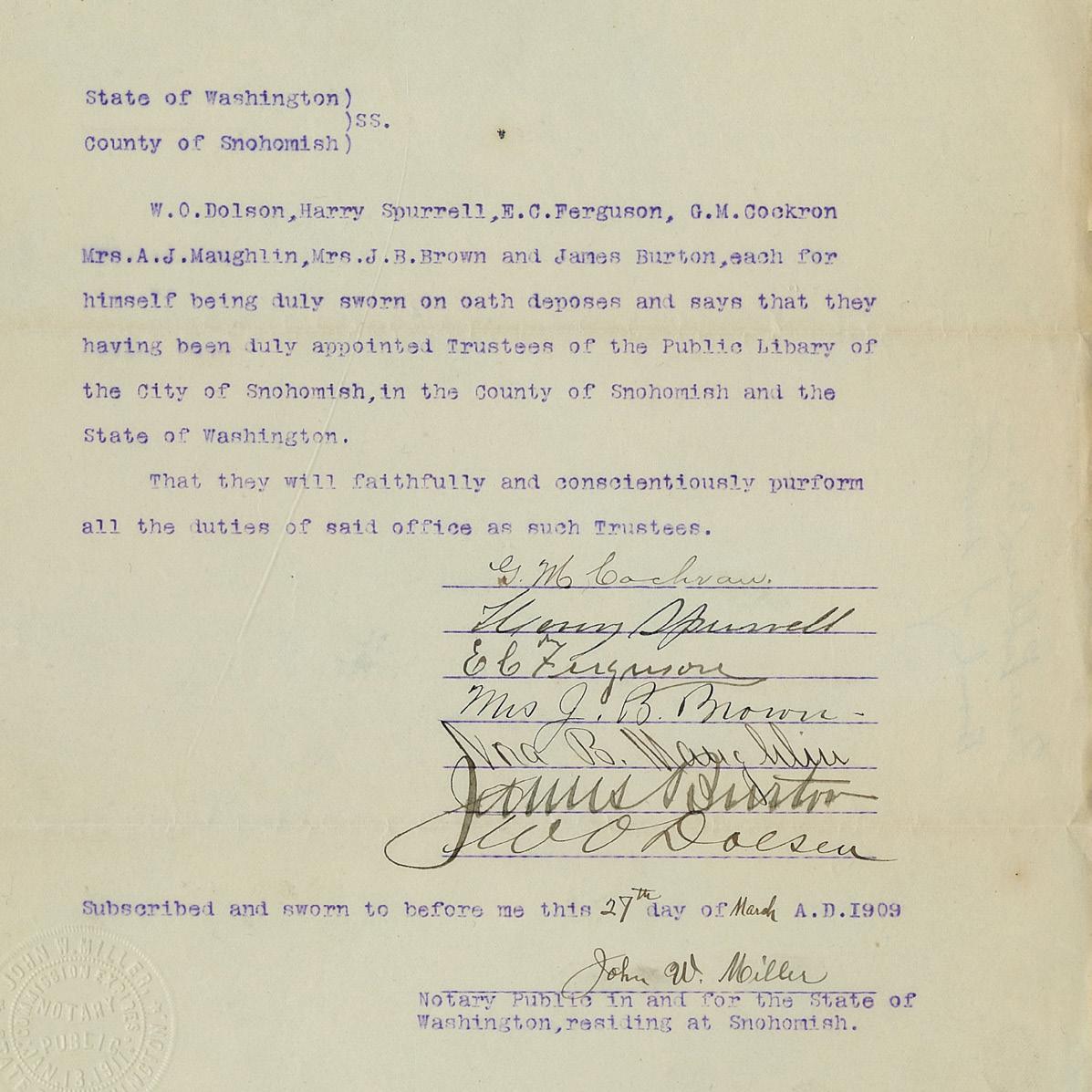
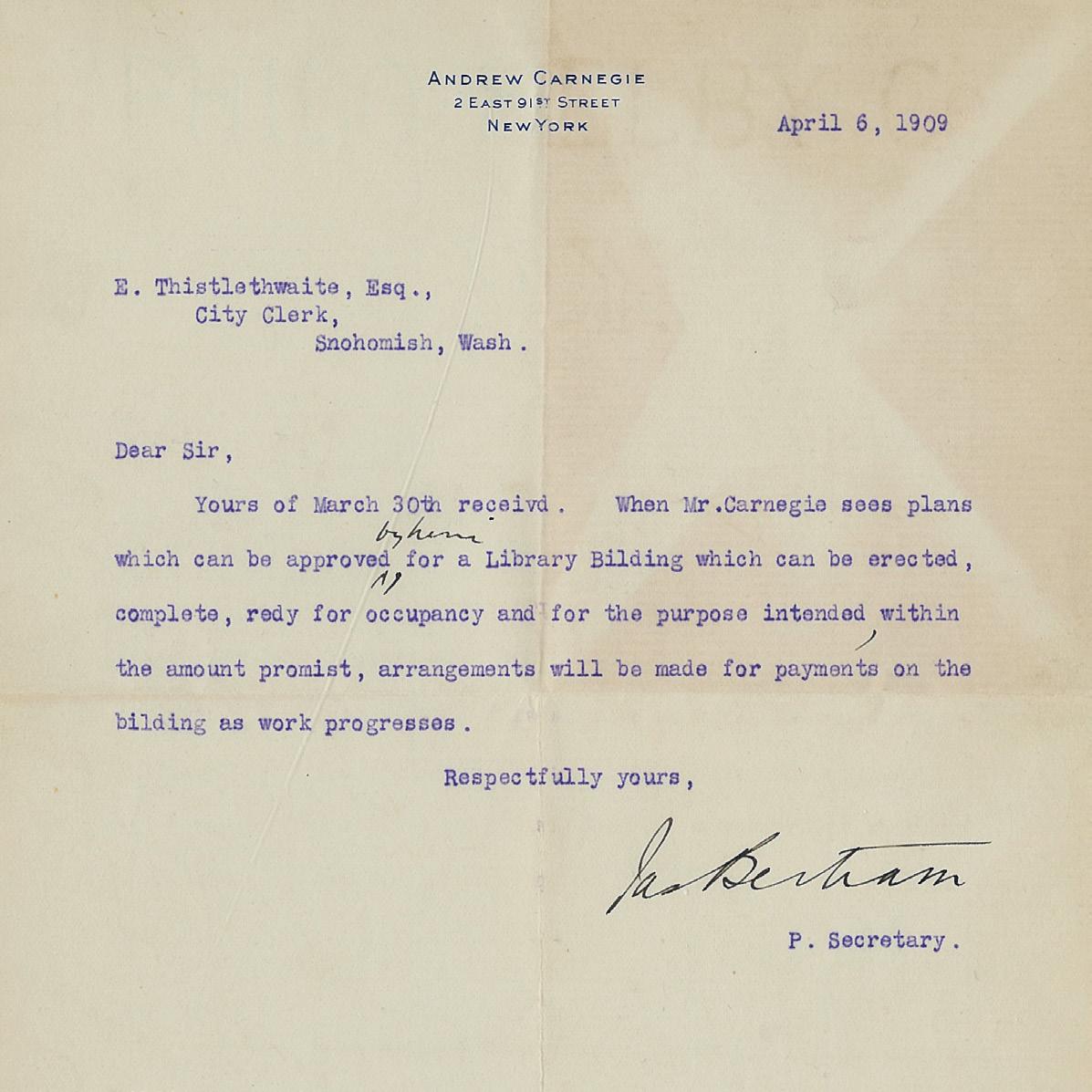
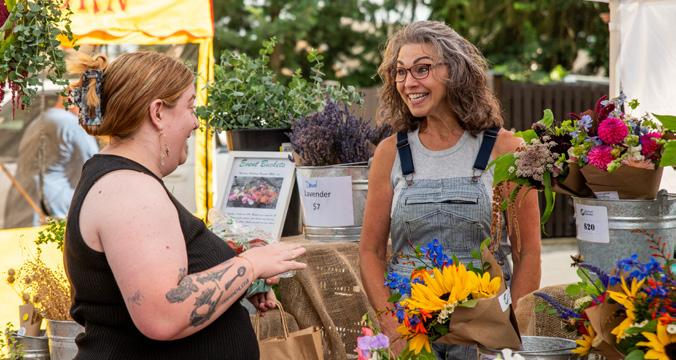
Snohomish Farmers Market
Thursdays, May through October,
3 p.m. to 7 p.m.
Historic Downtown Snohomish
Arbor Day/City Projects
Fall Open House
Saturday, September 27
Snohomish Carnegie Building
Snohomish Art Community
Studio Tour
Saturday, September 27 to Sunday, September 28
Historic Downtown Snohomish and surrounding area

Classic Car and Hot Rod Show
Sunday, September 28, 2025
Historic Downtown Snohomish

CROP Walk to Stop Hunger
Sunday, September 28, 2025
Historic Downtown Snohomish and surrounding area

Snohomish River Run
Sunday, October 12, 2025
Historic Downtown Snohomish and surrounding area
Serpentine
Friday, October 17, 2025
Historic Downtown Snohomish and surrounding area
Snohomish Zombie Walk
Thursday, October 30, 2025
Snohomish Carnegie Building

First Street Trick or Treat
Friday, October 31, 2025
Historic Downtown Snohomish
Día de Muertos (Day of the Dead) Community Celebration
Saturday, November 1, 2025
Snohomish Carnegie Building

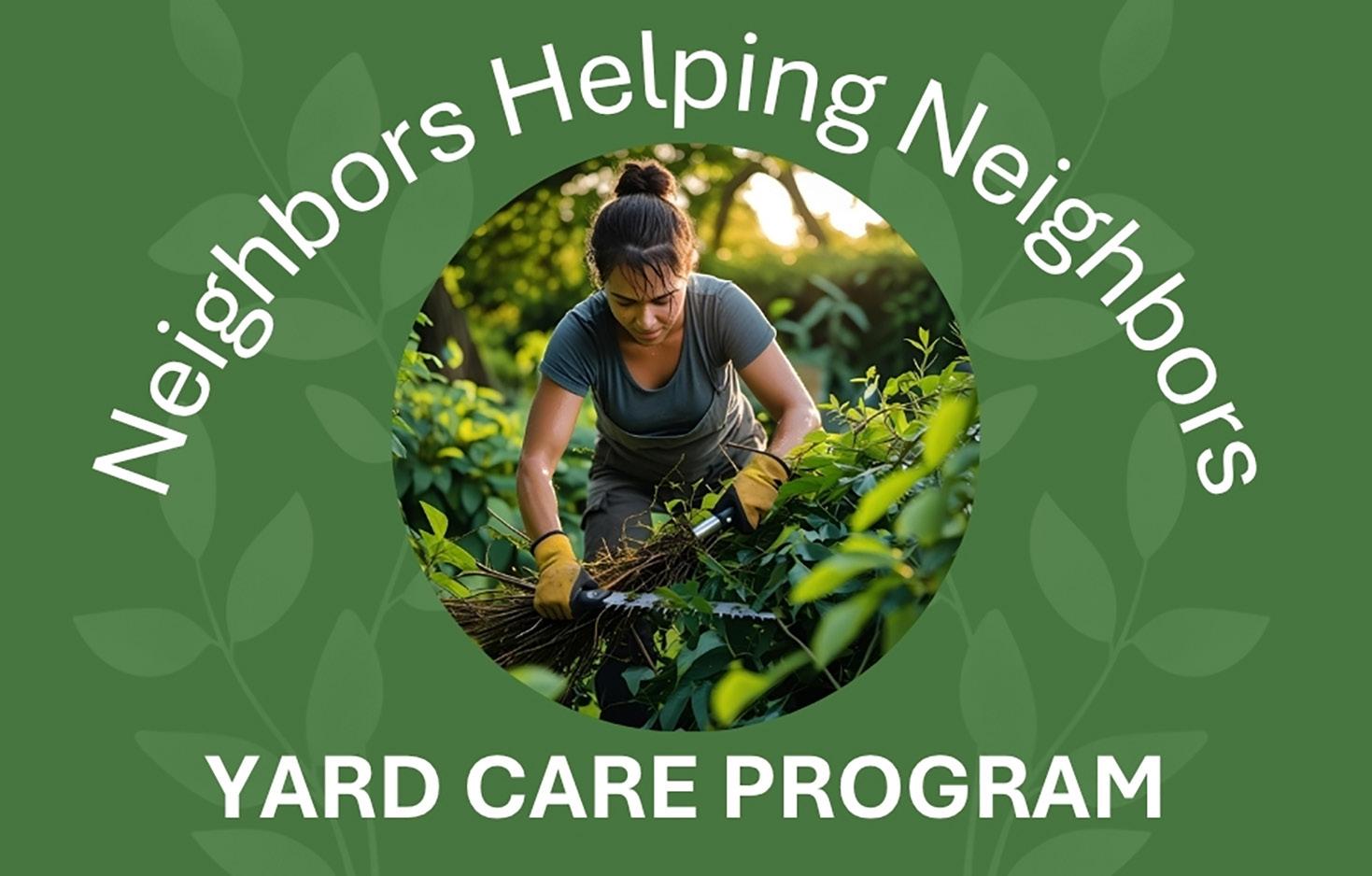
Volunteers
launched
program
residents to clean up overgrown yards. Contact Elle Hultz at (360) 862-2244 or heythisiselle@gmail.com to learn more.
